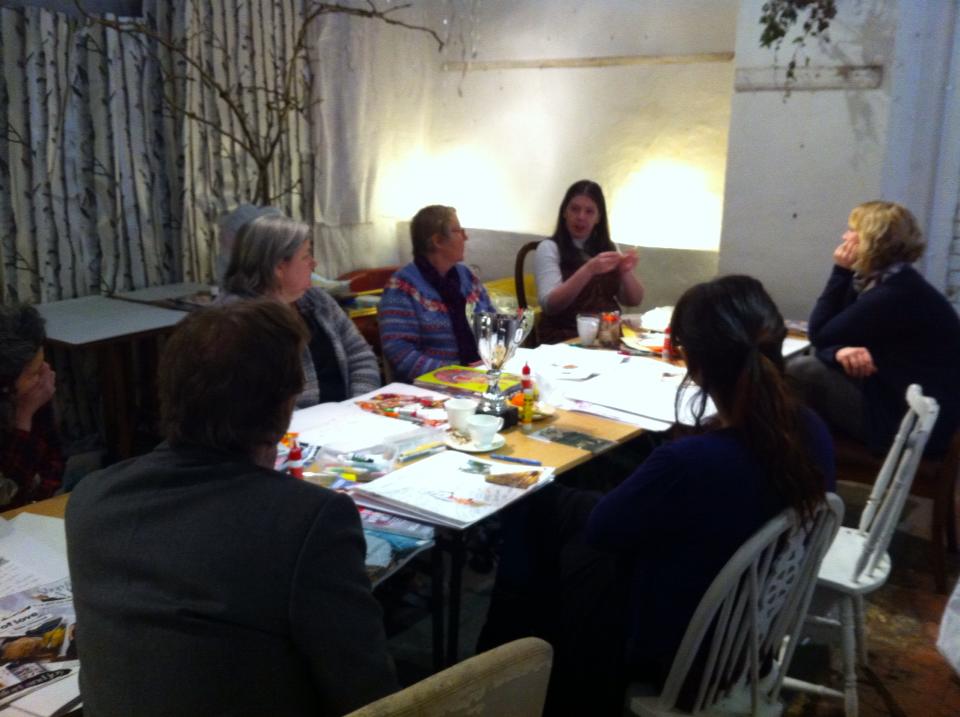At a recent Creative Entrepreneurship workshop I lead at the Red Door Studios in East Ham a lot of people had questions about the nuts and bolts of setting up their own businesses, so I promised a kind of check list as to the first steps to consider. These are logistical steps and are kind of things that seem to make people really anxious. So here’s a primer:
[Please note this information is specific to the UK. If you are not setting up a business in the UK then you will need to seek out relevant information for your country.]
- REGISTER WITH HMCR
It’s important that you register with HMRC (HR Revenue and Customs) as soon as you start trading as self-employed (even if you have a full-time job). Failure to do so can result in a penalty fine. Visit www.hmrc.gov.uk/selfemployed/register-selfemp.htm for step-by-step instruction to register either online or via telephone. If you have any questions give them a call as they are quite helpful. - NATIONAL INSURANCE
When you are registering with HMRC as self-employed you will also need to set up and start paying Class 2 National Insurance contributions (for the 2012-13 tax year is £2.65 per week). If your self-employed income is low you may be able to apply for an exemption from paying National Insurance. Details are at www.hmrc.gov.uk/selfemployed/register-selfemp.htm - TAX
It was Benjamin Franklin who said, “the only things certain in life are death and taxes.” As soon as you start to make money from your creative pursuit you should be setting money aside for your tax and national insurance bill. Some thoughts:- Start to keep track of every sale – date, amount, what was sold and to whom
- Start to keep track of all your expenses – supplies, studio rent, advertising costs, etc. Any costs that you incur to produce and market your art. Keep receipts. For guidance on legitimate expenses see: www.hmrc.gov.uk/incometax/relief-self-emp.htm
- Know the difference between GROSS INCOME and NET INCOME. The total amount of money you bring in from your art is your GROSS INCOME. From that amount you deduct all of your legitimate expenses to come up with you NET INCOME. You only pay tax and national insurance on your NET INCOME.
- HMRC have a very handy calculator to help you figure out how much you should be putting aside for your tax bill. You enter your net weekly or monthly profit and it will tell you how much you should be saving. www.hmrc.gov.uk/tools/sa-ready-reckoner/calculator.htm
- VAT
You only need to register for VAT when your sales are over £77,000 for the previous 12 Months. More details are at: www.hmrc.gov.uk/vat/start/index.htm
5. COMPANY STRUCTURE
There are three main options outlined here:
- Sole Trader – easiest and most straight forward. If you work alone and want to get up and running quickly, then you want to be a sole trader. See www.gov.uk/set-up-sole-trader for more details
- Partnership – this is for those who are setting up business with someone else. For more details see www.gov.uk/set-up-business-partnership
- Limited Liability – this is more complicated to set up. The advantage is that while a sole trader and partnership are both personally responsible for any debts incurred by the company, the Limited Liability company is a separate entity and any debts it takes on remain with the company. There are also some tax advantages to a Limited Liability set-up. You will probably need an accountant to register this for you. I would recommend you start as a sole trader until you are up and running and consistently profitable, then you might seek advice whether Limited Liability is right for you. For more details visit www.gov.uk/limited-company-formationLimited Liability companies must register with Companies House and also submit annual accounts. See www.companieshouse.gov.uk
6. TRADING NAME
As mentioned above, you only need to register with Companies House if you are setting up a Limited Liability company. However you should decide whether you are going to trade under your own name or set up a company name (known as trading as). It’s possible to start trading under your own name and later set up a company or the reverse – however the sooner you decide the better for branding purposes so that you can build a market who know what/who to look for.
If you are looking to set up a creative business you probably want to ‘claim territory’ in the virtual world for both your personal name and your company name. If there is already a competitor using that name online, then you probably need to think of something else. Places to check names and also to register your name might include (these are just a starter – there may be some specific to your field):
- Facebook Business Page
- Register your URL (www.yourbusiness.com/.co.uk etc.) Try GoDaddy.com
- Googlemail (there are loads of features built into Google which can help build your business and they will all be linked to a Googlemail account – so try to get the name that you want registered – or a variation on it)
- YouTube
- Ebay
- Etsy
7. BANKING
You could trade using your personal bank account though it isn’t really recommended. HMRC frown upon the practice as it makes it really muddy what is your personal finances and what are the company’s finances. Better to set up a business account. Shop around for a bank that will offer you this for free.
Overwhelmed? Take it one step at a time! Rome wasn’t built in a day and neither is your creative business.
Look out for future workshops covering these topics in greater depth or contact me if you would like one-on-one coaching.

Leave a Reply